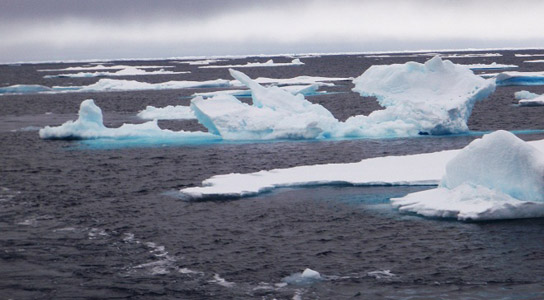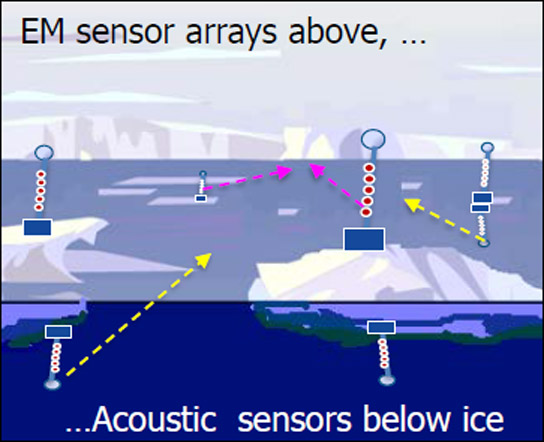DARPA Program Takes Advantage of Floating Icebergs
September 24, 2012

If the Arctic continues to melt, there could be more military and commercial activity in this environment. DARPA is working on an all-seeing network of sensors that will track what is happening in the Arctic all year long. This network will include sensors placed on icebergs.
DARPA wants to leverage icebergs for electromagnetic and acoustic sensors to help track ships and submarines. This was part of a DARPA briefing (PDF). The electromagnetic sensors would be stuck on top of icebergs, with acoustic sensors tacked onto the undersides, which could help track submarines and map the Arctic floor. Icebergs can drift up to six kilometers per day, and they have been speeding up ever since the record ice melts. The military wants to take advantage of this ice movement.

This is all part of DARPA’s Assured Arctic Awareness program; and while the program is vague, the agency documents hint that the Pentagon wants to keep track of the Arctic. DARPA program manager Andrew Coon states, “The program will emphasize remote distributed sensing as a way to provide standoff situational awareness in the Arctic.”
The Arctic could be used as new shipping routes become available, due to the ice melt. Companies might also plan to harvest the Arctic’s deposits of oil and natural gas. There’s even the scenario of Arctic War, whereupon nations go to war as they scramble for energy resources, because of the messy overlapping claims to Arctic waters.
Although the land mass is decreasing, it’s still at more than three million square kilometers. Ships could be tracked by their radar signatures, used to track hazardous ice, and even though the Arctic ice scatters acoustic signals, Darpa wants to use “ice dynamics” and “opportunistic active acoustics” as leverage to track submarines.
No comments:
Post a Comment